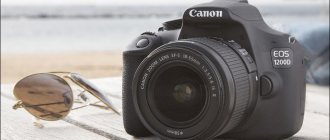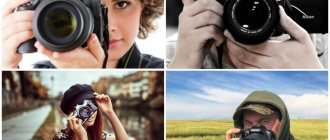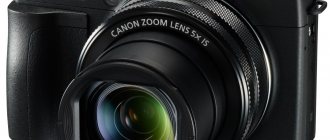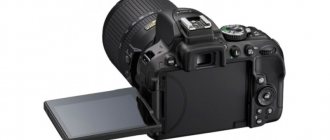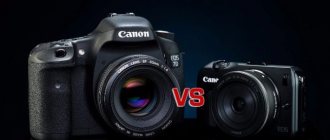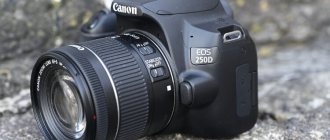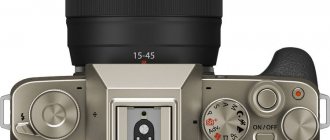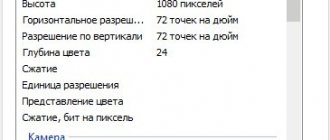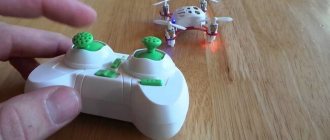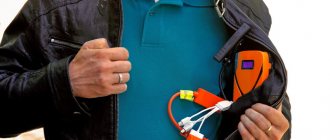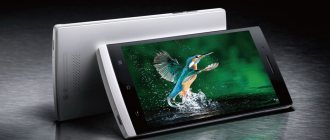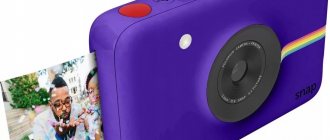1
Sony Cyber-shot DSC-RX100M5A
Look
2
Nikon Coolpix A100
Look
3
Fujifilm XF10
Look
A mini-camera or compact is a camera with a non-replaceable, rigidly built-in lens. It is characterized by its low weight and small dimensions. It is convenient to take it on trips when it is important to always have your camera at hand. The compact camera is still popular, despite the abundance of smartphones with built-in cameras. Read about the criteria for choosing a good digital point-and-shoot camera, its advantages and disadvantages in our article. In it you can also find out about the rating of the 10 top models.
Advantages and disadvantages of mini cameras
Many users begin their acquaintance with photography by purchasing this class of device. Compacts do not have the characteristics of professional devices.
Compacts have approximately the same number of advantages and disadvantages. Their advantages include:
- Compactness . One of the main advantages of the device. It is practical, light, convenient, and indispensable in hiking conditions, since it fits in a clothing pocket.
- Ease of use . The “point-click-shoot” principle suits amateur photographers who have no need to master the complex, multifunctional and expensive equipment of professional photographers.
- Depth of field . One of the strengths of miniature photographic equipment. DOF allows you to get a clear image. Although, if you need a “special effect” in the form of a blurry picture, a mini camera will not cope with this task.
- Batteries . These devices operate on AA batteries. This simplifies their operation. You can charge them in a matter of minutes.
- Good frame ratio 4:3 . Creates an almost square image. The so-called “heaven and earth” fall into the frame. This is a significant advantage compared to other aspect ratio formats.
- Budget cost . The price of such devices starts from $100. For little money you can get an oversized, lightweight device that produces high-quality photos suitable for family photo albums.
The disadvantages of compact devices include:
- Small physical matrix size . Accordingly, they have a low dynamic range of the sensor. Even despite the number of pixels, the photos are far from professional. The same drawback makes it impossible to photograph a moving object.
- Optics are not of the highest quality . In “compacts” it is often made of plastic, with small sensors. Since the “glass” is not removable, it is not possible to replace it with more decent optics.
- Low power flash . In daylight, the photo device takes pictures of quite decent quality. A low-power flash is not able to compensate for the lack of light and can ruin the final shot. Moreover, it is not possible to connect a more powerful third-party flash.
- Static lens . It has a fixed focal length that cannot be changed.
The best entry-level and mid-range compact cameras
In the first selection we will look at amateur and semi-professional compact cameras. The presented models will not only allow you to capture any important life events, but can also contribute to your desire to become a professional photographer. With such compact, and in some places even very miniature dimensions, these compact cameras have quite a wide range of functionality.
Fujifilm FinePix XP140
Rating: 4.5
Let's start the review with the most budget version of a compact camera, the approximate price of which is about 180 USD. This camera is widely popular due to its combination of low price and a number of interesting features.
The Fujifilm FinePix XP140 has a fairly durable design. The camera is equipped with reliable protection from dust and moisture. With it you can dive under water to a depth of 25 meters - this is 5 meters more than the previous model in this series - XP130. The camera has a reliable cover with a lock for the battery compartment, preventing accidental opening under water. The lid has a rubber seal that prevents the entry of dust, dirt and of course water.
In addition, the camera can withstand falls from a height of approximately 180 cm and is able to function smoothly at temperatures down to -10 degrees. Therefore, you can safely use this device in extreme conditions and not be afraid to give it to children.
The camera uses a 16-megapixel CMOS sensor with image stabilization. The Fujifilm FinePix XP140 has a built-in wide-angle lens (28mm), which is equipped with a 5x zoom. So whether your subject is off to the side or in the center of the frame, you'll never lose sight of it.
This model has built-in Bluetooth and Wi-Fi wireless communication interfaces. This allows you to quickly transfer the image to your smartphone and allows you to use remote control, with which you can zoom in, focus on the subject, and even take a photo. In addition, Wi-Fi and Bluetooth connections greatly simplify pairing devices and allow you to add geotags to your photos.
In addition to good footage, you can get great video in up to 1080p at 60fps. The camera is also equipped with shooting modes such as Slow Motion and Time-lapse.
The Fujifilm FinePix XP140 has an updated autofocus system that allows you to independently select the focus point using the joystick located on the camera panel to switch. When a face is detected, the eye tracking function is activated. Another interesting option is an electronic level, which allows you to take images without blocking the horizon. In addition, in the compact camera settings there is a set of various filters that, if desired, will help you avoid post-processing.
Advantages
- nice price;
- reliable protection from dust and moisture;
- the camera is frost-resistant;
- can be filmed underwater;
- there is Wi-Fi and Bluetooth;
- Full HD shooting at 60 fps;
- slow motion and timelapse shooting modes.
Flaws
- At this cost, no significant shortcomings were identified.
Sony Cyber-shot DSC-RX100
Rating: 4.6
The next model that we will consider is produced by Sony, and it first entered the market back in 2012. At the same time, the demand for it does not fall, and the price remains practically unchanged to this day. Today the cost of such a camera starts at approximately 360 USD. Let's figure out why this camera remains in the top for 8 years.
The monolithic body of the camera is made entirely of metal, which the next generations of the RX line cannot boast of. The camera has a fairly large 20.2MP CMOS sensor built into it, measuring one “Vidicon” inch. The minimum sensitivity value is 125 ISO, and the maximum is 6400 ISO. But in reality, when shooting in low light, the working ISO will reach 3200, since at a higher number too pronounced noise will appear.
The camera optics are supplied by the legendary German company Carl Zeiss and this is indicated on the camera body itself. This lens was truly luxurious in 2012, but even now it is more than decent. This is a zoom lens with a focal equivalent of 28-100mm and an aperture of F1.8-F4.9. If compared to a standard 28-100mm system zoom, it will have an F3.4-F5.6 “hole”. That is, the optics of the Sony RX100 camera will be a whole “stop” lighter. In simple terms, this lens lets in twice as much light at any zoom length. Moreover, this model has the sharpest optics in the entire line of RX cameras.
The Sony RX100 compact camera is equipped with complete, versatile controls. In addition to the AUTO mode, there is a mode with shutter priority (S), aperture priority (A), program (P) and with fully manual settings (M), which will allow you to set all the indicators manually. The camera also has a built-in optical image stabilizer, which copes with its tasks quite well.
The camera has a built-in flash with red-eye reduction function. Its coverage reaches 6.30m. The camera has a built-in tripod mount and orientation sensor. The camera also has a stereo microphone that allows you to transmit high-quality sound during video shooting. Video recording format is Full HD 1080p with a maximum frame rate of 60 frames/s. Continuous video recording time is 9-10 minutes.
Advantages
- large matrix;
- fast lens;
- good image detail;
- ability to shoot in RAW format;
- Full HD video at 60 fps;
- monolithic body;
- fast autofocus.
Flaws
- not the most accurate white balance;
- not too rich equipment.
Canon PowerShot G9 X Mark II
Rating: 4.7
The ultra-thin Canon G9 X Mark II not only features an exceptional retro design, but also allows you to achieve excellent quality in photo and video shooting thanks to its high specifications. The price of this model, as in the previous case, is no longer closer to the lower, but to the middle price segment of SLR cameras, and is approximately 370 USD.
The image quality in all cameras is most often determined by two parameters: the matrix and the processor. In this case, the matrix is identical to the aforementioned Sony Cyber-shot DSC-RX100 model. And the processor of the Canon G9 X Mark II is a relatively powerful DIGIC 7. Its performance allows it to process images quite fluently and “catch” focus.
The focal equivalent of the lens is 28-84mm, and the aperture ranges from F2 to F4.9. Such indicators indicate that the “lens” can be considered fast. The optics are also equipped with a three-fold optical zoom. This is usually enough for most scenes, but if 3x zoom isn't enough for you, you can double it with the digital Zoom Plus function.
You can control the camera using buttons and selectors, or through the LCD touch screen. The compact camera Canon G9 X Mark II is equipped with a large three-inch display that has a resolution of more than 1 million dots. If you actively use photo editors, then you have the opportunity to take pictures in “raw” RAW format. Few compact cameras support this format.
During the shooting process, the user can be helped by the optical image stabilizer located in the PowerShot G9 X lens. It eliminates 5-axis vibration, allowing you to take sharp pictures in difficult conditions and record video without the natural shaking of hands and other jerks. You can also change settings using the control ring on the lens, its function can be adjusted independently.
In the Canon PowerShot G9 X Mark II, the manufacturer has added almost all modern communication interfaces. The camera can connect to a tablet or smartphone via Wi-Fi, Bluetooth or NFC. By connecting a compact camera and a phone, you can not only quickly exchange pictures, but also remotely control the device from your mobile device. The Canon G9 X Mark II has its own replaceable battery, which lasts for approximately 235 shots, which is a very good result for a compact camera.
Advantages
- large matrix in relation to the size of the camera;
- optical stabilizer;
- ultra-compact dimensions;
- wireless interfaces Wi-Fi, Bluetooth and NFC;
- fast lens;
- quite powerful DIGIC 7 processor;
- sensor size 1”;
- supports RAW format.
Flaws
- weak flash;
- uncomfortable mode switch wheel;
- Video quality is not very high.
Olympus Tough TG-6
Rating: 4.7
The next compact camera in our review is made by Olympus. This model was released last July 2019 and quickly gained popularity. Almost a year and a half later, the demand for this camera continues to fall. The approximate cost of Tough TG-6 is 395 USD.
This camera can be used in the most extreme conditions thanks to a truly sealed housing. Tough TG-6 is even deservedly popular among divers, because... With it you can dive under water up to 15m. When diving more than 1m, the camera automatically adjusts the white balance. The camera can also withstand static loads of up to 100 kg and drops from a height of about 2 m. Able to work stably at low temperatures down to -10 degrees.
The Olympus Tough TG-6 has a built-in 12MP CMOS sensor. This is not as large a matrix as the above-mentioned models, hence the image quality is a notch lower. But the manufacturers did not focus on the top quality of photo and video shooting, but rather on “indestructibility” and the use of the camera in different conditions.
The camera lens is protected by double-sided anti-fog glass. It is equipped with a quadruple zoom with a focal length of 25-100mm and a maximum aperture of F2-F4.9. The lens does not move forward and, on the contrary, is deeply recessed into the camera body - such a system was created for maximum isolation from the external environment.
Unlike the previous TG-5 model, the new camera can shoot high-definition 4K video at 30 fps. The maximum recording time reaches 29 minutes, and the maximum video file size is 4 GB. The device supports macro photography mode with a minimum focusing distance of 1cm.
The high capacity battery of the Olympus Tough TG-6 allows you to take an average of up to 340 photos on one full charge. Viewing and framing of the footage is done using a three-inch display. The screen is not touch-sensitive, but considering the conditions in which this compact can work, then this is even better.
The camera is equipped with GPS navigation and an orientation sensor. It also supports remote control via Wi-Fi. Olympus Tough TG-6 supports the RAW image format, this will allow you to achieve high-quality post-processing of your images.
Advantages
- robust design and high protection rates;
- 4K video at 30 fps;
- GPS navigation;
- macro mode;
- high battery capacity;
- 4x zoom lens.
Flaws
- small matrix;
- The visibility of the LCD display is reduced in bright light.
Nikon Coolpix A1000
Rating: 4.8
Nikon's Coolpix A1000 is a little big for the compact family, but with such a large built-in zoom it couldn't be otherwise. This is the latest addition to the Coolpix series, which has a classic design and is available in two palettes: black and silver. The average price of such a model is about 420 USD.
The camera body is made of metal. On its outer part there is a comfortable handle, which is significantly modified for the better compared to the previous Coolpix A900 model. The camera is equipped with an electronic viewfinder, the field of view of which reaches 98%. The EVF viewfinder will allow you to navigate the process of shooting in bright light. The 7.6cm touch screen can tilt downwards up to 180 degrees, making it possible to shoot from different viewing angles.
The matrix of the Nikon Coolpix A1000 is the same small as that of the previous Olympus Tough TG-6 model. Of course, this is not enough to obtain top-quality images, but even with such a “cropped” matrix you can see a slight advantage. It consists in low image noise at high ISO values.
The main advantage of this camera is its 35x zoom. This is a big gap in zooming, if we remember the models discussed above. Indeed, the manufacturer put a lot of effort into creating the optics of this camera. The optical design of the lens is made up of 13 elements in 11 groups, among which there are aspherical lenses. The focal length of the optics reaches 24-840mm with an aperture ratio of F3.4-F6.9. This zoom rate is typical for ultra-long focal length interchangeable lenses.
The Nikon Coolpix A1000 camera has the fastest shutter speed of 1/4000 second. With such a fast shutter release, you can easily photograph subjects that move at high speed. Also, when shooting, an optical image stabilizer will help you, which will prevent unwanted vibrations.
Advantages
- 35x zoom;
- electronic viewfinder;
- minimum shutter speed - 1/4000 second;
- touch, rotating screen;
- wireless connection to a mobile device;
- convenient location of controls.
Flaws
- no sound recording;
- small battery capacity.
Panasonic Lumix DMC-ZS100/TZ100
Rating: 4.8
For many users, it is very unusual to see cameras from Panasonic. And if we limit ourselves to the “photo and video world,” then most photographers believe that this company is more associated with the production of video cameras. But you shouldn’t completely neglect these cameras, since they also perform well in photography. Likewise, the Panasonic Lumix DMC-TZ 100 model under consideration may pleasantly surprise you with its functionality and image quality. The price of such a compact is approximately 460 USD.
The matrix of this camera is quite large for a compact, its size is 1 Vidicon inch with a number of effective pixels of 20.1 million. It is worth noting that compact cameras with an inch matrix are only available from those manufacturers that are capable of producing matrices themselves - these are Canon, Sony and Panasonic . The rest of the companies that produce cameras with such matrices, frankly speaking, have failed. Since the quality of their images differs significantly and is far from for the better.
The lens of this camera is manufactured by LEICA, which already makes us take a serious look at this model. A 35mm equivalent lens has a focal length of 25-250mm and an aperture ratio of F2.8-F5.9. The optical design is made up of 12 optical elements in 10 groups. This design features 5 double-sided aspherical lenses that provide sharpness throughout the entire zoom range and prevent distortion in the frame.
The camera, like all modern Panasonic brand models, is equipped with a post focus mode - that is, during shooting, the device creates up to 300 frames in one array across the entire focal field, after which you can select the most focused frame. The minimum shutter speed on the camera's electronic shutter is 1/16000s. Not every semi-professional DSLR can boast such a shutter speed. The Panasonic Lumix DMC-TZ 100 has a full electronic viewfinder in a very compact body.
Video shooting can be done in 4K UHD format with a bitrate of 100 Mbit/s, but then you will have to stock up on a capacious memory card. The camera also allows you to shoot in Full HD mode with a resolution of 1080p and a frame rate of 120 fps. The Panasonic Lumix DMC-TZ 100 is also equipped with a full-fledged interval shooting mode. That is, the camera itself can collect time-lapses at a given frame rate and at the same time save the original images.
Advantages
- inch matrix;
- Full HD and 4K video format;
- LEICA DC VARIO-ELMARIT lens;
- distortion and aberrations are negligible;
- full viewfinder;
- there is an optical image stabilizer;
- minimum shutter speed - 1/16000s;
- There is macro photography.
Flaws
- inconvenient ergonomics;
- small battery capacity.
Ricoh GR III
Rating: 4.9
Ricoh released its most compact camera in 2019 and it is still considered the smallest on the market. The camera fits easily into the palm of your hand and is equipped with quite a lot of functionality. The average price of such a compact on the market is 1180 USD.
The dimensions of the camera are only 109x62x33mm. With such a minimal camera size, manufacturers managed to install an APS-C type matrix with a number of effective pixels of 24.24 million. A similar matrix is built into, for example, the Fujifilm XF10 camera, but it is larger in size. Ricoh GR III supports 14-bit RAW format in DNG (digital negative specification) - this allows photo editors to see more information about the frame.
The focal length of the GR III optics is 28mm. It's somewhere between a wide-angle and a zoom lens, meaning you can shoot both portraits and landscapes. The optical design consists of 6 elements in 4 groups, including aspherical lenses. The lens can be considered fast at F2.8. The camera is equipped with a three-axis optical stabilizer based on matrix shift – Shake Reduction.
The camera has a function called snap focus - this is a type of focusing in which the focus is fixed at a given distance. You can set a distance in advance, for example 2m, and everything further than this value will remain in focus. This feature is a real godsend for a street photographer. The camera has another interesting option, such as light exposure metering. That is, by setting this mode, you will never get overexposure in certain areas of the frame.
The Ricoh GR III has a built-in macro mode, which is activated by pressing one button. During normal shooting, the camera takes photographs with a minimum distance of 10cm, and with macro it takes pictures from 6cm. For Instagram lovers, the frame has an aspect ratio of 1:1. This will allow you to directly upload photos to a social network without preliminary cropping by connecting the camera to mobile devices via Wi-Fi.
The Ricoh GR III camera records video in MOV format. The maximum video resolution is 1080p at 60 fps. Video shooting in Time-lapse mode is also possible.
Advantages
- record small size and weight in this segment;
- APS-C matrix;
- shooting in DNG format;
- three-axis optical stabilizer;
- fast focus;
- touch screen with focus point selection;
- snap focus function.
Flaws
- small battery capacity;
- There is no built-in flash.
Criterias of choice
In order not to be disappointed in the purchase, you need to know what criteria are important for small cameras.
- Compactness
The device should not be heavy, bulky or awkward in shape. After all, it is designed for travel, trips, hikes, and active recreation. Ideally, the camera fits in a large pocket.
- High quality photo
Even without being a professional, everyone wants to get a high-quality photo. This is quite possible due to the good “stuffing” of the device.
- Shooting speed
The ability to obtain more frames depends on how fast the device works. Slow camera operation does not affect the quality of the pictures. There will simply be fewer of them.
- Good zoom quality
All digital devices have zoom. Advertising often exaggerates the focusing capabilities of devices. It is believed that the larger the digital zoom, the better the shooting quality. But in fact, the main role is played by the device’s ability to change the focal length due to optical zoom.
- Video option
The presence of a built-in video camera is an additional plus of the model. But you can’t expect professional-quality shooting from point-and-shoot cameras. The videos will be at an amateur level. For a more serious approach, you will need a separate video camera.
- Hassle-free charging
All digital cameras require power. These can be AA batteries or AA batteries, as well as lithium-ion batteries. The last one listed is the best. But when it comes to mobility, batteries are much more convenient. Lithium-ion batteries require a long charging time and an electrical outlet.
- Device type and price
These 2 parameters are interconnected. Conventionally, all compacts are divided into 3 categories:
- Soap dishes
The most affordable and widespread. Suitable for beginner photographers. Manual settings are kept to a minimum. But a small, non-replaceable lens and a small matrix do not make it possible to take colorful and contrasting photos. Night shots are almost impossible with this technique. The main advantage of soap dishes is their budget price and ease of use.
- Mirrorless cameras
As close as possible to semi-professional equipment. They retain the size and lightness of soap dishes, but the functionality is improved. Interchangeable lenses expand the capabilities of mirrorless cameras. There are models that are close in quality to soap dishes. There are devices that take photographs with the quality of SLR cameras. Mirrorless cameras are excellent value for money.
- DSLRs
Designed for professionals who understand the intricacies of photographic equipment and can fully reveal its functionality. They are the most expensive and heaviest. Traveling with them is quite problematic, but the quality of the footage is the best of all. The DSLR allows you to take excellent photos in any lighting conditions.
The best mini camera
Sony Cyber-shot DSC-RX100M5A
Premium compact camera. Combines high-aperture Zeiss optics and compact dimensions. The 3-inch tilting display tilts 175° for comfortable self-portrait shooting. For convenient viewing when shooting at arm's length, the display can be rotated 45° downwards.
This model is equipped with an electronic viewfinder with a resolution of 2.36 million dots. The viewfinder is hidden in the body and is operated using a small lever on the left side of the body. When you open the viewfinder, the camera automatically turns on and turns off when you close it. You can also use the lever to activate the built-in flash.
On the rear panel there are control buttons: a 5-way navigation button with a rotary selector, 4 additional control keys around it and a button for turning on video recording.
Takes pictures in the smallest detail. Like other models in the RX100 series, it is equipped with a 1.0 matrix. Key Features:
- fast autofocus – 0.05 s2;
- 315 focal plane phase detection autofocus points;
- Continuous shooting up to 24fps3 with AF/AE tracking;
- An impressive set of features for shooting in 4K.
Sony Cyber-shot DSC-RX100M5A can record video in slow motion. Slowdown speed 960 fps11.
Pros:
- high technology;
- compactness and light weight;
- wide selection of manual settings;
- presence of a viewfinder;
- quick readiness for shooting;
- fast and tenacious autofocus;
- universal fast lens.
Cons: none found.
Nikon Coolpix A100
Thanks to its miniature size, the Nikon Coolpix A100 will easily fit into your pocket or handbag. The core of the device is a standard 1/2.3″ matrix for point-and-shoot cameras with a resolution of 20.1 MP. The NIKKOR lens provides 5x optical zoom and shoots at equivalent focal lengths of 26–130mm. With the Dynamic Fine Zoom function, the zoom can be expanded up to 10x.
The model is equipped with additional functions:
- "Automatic scene selection." Independently selects the most suitable scene mode to improve the settings.
- "Shooting a panorama." Allows you to capture impressive landscape shots while traveling.
- “Reducing motion blur.” Helps achieve clear images when shooting HD videos.
The camera provides special effects during shooting, for example:
"Glossy retouching" It's easy to create the perfect portrait. To do this, you can use one of 12 photo retouching effects. They add makeup to the image: powder, eye shadow, mascara and will help disguise blue circles under the eyes.
Quick effects. Quickly create a “special effect” on a captured photo, for example, “Fisheye”, “Painting”, “Miniature Effect”.
Smart Portrait mode. Designed to “catch” the perfect shot. For example, a smile timer will help you take a photo when a person smiles. The Blink Proof option notifies the photographer that the subject blinked during shooting and the photo needs to be retaken.
The camera works without recharging for a long time. Discharges when the number of pictures taken approaches 250.
Pros:
- practically weightless, weighs only 119 g;
- thin body;
- USB charging capability;
- large display;
- many additional options;
- can shoot video in HD quality 720p;
- longer battery life;
- support for SDXC, SDHC, SD memory cards.
Minuses:
- high price.
Fujifilm XF10
A special feature of the Fujifilm XF10 is Snapshot mode. With its help, you can set the focusing distance and aperture parameters in advance for shooting without focusing. For example, for street photography, you can use an aperture of f/5.6 and focus at a distance of 5 meters. For portraits, you need to open the aperture and reduce the focusing distance. By adjusting the settings, you can take almost instantaneous photos without spending time focusing.
The Fujifilm XF10 compact has characteristics similar in quality to professional cameras:
- 3-inch touch screen;
- 28 mm f/2.8 lens (35 mm equivalent) with digital teleconvector;
- 24.2 MP matrix APS–C format;
- 4K video with digital stabilizer;
- shoots in 1:1, 16:9, 3:2 formats.
The camera is available in 2 colors: black and champagne gold. It is very miniature, lightweight, weighs 280 g. For convenience, a wrist strap is included.
The camera works quickly for its class. Switching on and starting up occurs in a matter of seconds. The shooting speed of 6 frames per second in RAW format allows you to capture even fleeting frames. If you shoot in JPEG format, the speed will increase to 13 fps. Maximum ISO parameters reach ISO 3200−6400 units. This is enough to take good pictures in low light conditions. The camera charges via USB, which is convenient when traveling.
The compact supports 11 film simulation modes and provides a contrasting, rich image. Additionally, you can apply one of a large number of filters, for example – Tony Camera or HDR art.
Pros:
- simple controls;
- stylish design;
- film modeling;
- large selection of settings;
- manual shooting modes;
- shooting in low light at high ISO;
- excellent quality image;
- the ability to set any preset autofocus position.
Minuses:
- the screen is not rotatable;
- not very convenient lens cap;
- 4K video only 15 fps;
- no hot shoe.
Canon PowerShot SX620HS
Canon PowerShot SX620 HS with 25x zoom, light weight - 180 g, image stabilizer - an excellent option for everyday use. With a focal length range of 25mm to 623mm, you can achieve a zoom ratio suitable for capturing wide landscapes and detailed images. To create more creative photos, there are scene programs and special effects, for example, miniature.
Automatic mode will be convenient for beginner photographers. The camera can automatically recognize 32 scenes and change settings independently. There are no fully manual or semi-automatic modes.
On the back of the device there is a 3-inch display. It serves as a viewfinder. A special button on the panel starts shooting video in HD quality. Thanks to NFC and WLAN modules, you can send photos and videos to smartphones wirelessly.
Pros:
- large zoom;
- creative and story-based programs;
- Wi-Fi support;
- excellent landscape photography;
- intelligent optical stabilizer;
Minuses:
- cannot be charged by connecting MicroUSB to the phone;
- slow continuous shooting;
- “soapy” in low light.
Ricoh GR II
One of the lightest and smallest mirrorless cameras with an APS-C format matrix currently on the market. The built-in lens retracts into a magnesium alloy body. This ensures its complete safety during travel. Lens Features:
- distance from the optical center of the lens to the focusing point (in 35 mm equivalent) – 28 mm;
- the aperture opens to F8;
- number of optical elements – 7;
- number of groups of optical elements – 5;
- aspherical lenses.
The device turns on in 1 second. Autofocus time is 0.2 seconds. In burst mode, the camera takes 4 frames per second. Saves pictures in RAW format or compresses them to JPEG. The 16.2 megapixel matrix is created using CMOS technology and belongs to the APS–C format. Wireless Wi-Fi and NFC modules make synchronization with a tablet and smartphone possible. Devices with pre-installed Android and iOS OS are supported. Battery capacity – 320 photos.
Pros:
- suitable for amateur and professional use;
- Possibility of wireless synchronization with external flash;
- compact dimensions with an APS-C format matrix;
- high lens sharpness;
- simple and clear settings menu;
- fast and accurate autofocus.
Minuses:
- no stabilizer;
- weak batteries, especially in frosty weather.
Olympus TG-5
Rugged and waterproof, the camera is ideal for extreme hikes. Available in a wide range of colors: red, grey, blue, black, yellow. Made in a sporty style.
One of the “heavy” compact models. Compared to other versions, it is more “weighty” - 250 g. The weight is added due to the high protection of the case. It can withstand a fall from a 2-meter height, immersion in water to a depth of 15 meters, frosts down to -10°C, and is resistant to the accumulation of dust and dirt.
The body is made of durable plastic. At the bottom there are compartments for batteries and SD cards. MicroUSB and HDMI ports are located on the side of the device. The entrances are reliably protected by double plugs from dust, sand, and water. On the rear panel there is a 3″ LCD display with a resolution of 460 thousand dots. The screen is used as a viewfinder. Matrix size – 12 million effective pixels, total – 12.7 million. Shooting speed – 20 frames per second. Shoots in different formats: 16:9, 3:2, 1:1, 4:3.
Pros:
- shock and water resistance;
- the ability to install attachments on the lens;
- takes decent quality videos and photos underwater;
- fast work speed;
- comfortable grip for a compact;
- convenient, wide functionality.
Minuses:
- no stabilization when shooting video;
- Insufficient battery capacity.
Kodak Mini
The tiny credit card-sized Kodak Mini M200 camera has a stylish design that comes in several colors. A wide-angle lens and a built-in mirror help take full-fledged photos with such “toy” dimensions.
The camera is incredibly easy to use. Allows you to send pictures in just 3 steps:
- Click the Share button in viewing mode.
- Select an email address or Kodak PULSE digital frame.
- Connect to a computer or place a memory card in the slot: photos and video clips will be automatically uploaded to the selected website or email address.
The mini camera takes pictures of excellent quality even in the 75 x 100 cm format due to its 10.2 megapixel resolution. Kodak Color Science delivers brighter, more vibrant colors. The functionality includes several color modes: bright, neutral, black and white, sepia, full colors. There is a choice of subject programs: “Snow”, “Fireworks”, “Sport”, “Auto” and others. Kodak Mini can recognize up to 20 faces, making them easier to find in the total number. Recording in VGA video format with audio recording is possible.
Pros:
- good HD quality pictures in 16:9 format;
- simple settings;
- the ability to share photos and videos;
- excellent colors of pictures;
- built-in editing function;
- scene programs and choice of color modes.
Minuses:
- weak flash;
- noise when using zoom.
Samsung Galaxy Camera
The weight of the camera is quite large - 305 g. The entire rear part is occupied by a touch display with a resolution of 1280x720 pixels, 4.8″ diagonal. This camera has the characteristics of a good smartphone or mini-tablet: Wi-Fi, micro SD memory card, as well as GPS and micro USB. The large screen allows you to read books, watch videos and play games. The compact can be charged using a regular phone charger. It works with a regular micro-SIM card, which allows you to transfer SMS.
Samsung Galaxy Camera has many smart modes. With the help of such presets, even a beginner in photography can achieve good shooting results. Best photo, landscape, continuous shooting, macro photography, panorama, silhouette, sunset, freeze frame, rich tones - these and other smart modes help you achieve beautiful and impressive photos.
The functionality includes voice control. However, it only works in English. Using commands, you can adjust pictures, zoom the image, and launch the “Retouching” mode.
Pros:
- 3G support;
- powerful optical zoom x21;
- large selection of modes;
- wide touch screen;
- Full HD video;
- Can be used as a mini tablet.
Minuses:
- the battery discharges quickly;
- Video recording lacks brightness.
Panasonic Lumix DMC–FT30
The main feature of the Panasonic Lumix DMC–FT30 is its metal waterproof housing. Due to this, this model is able to withstand immersion in water to a depth of 8 meters. It is also shock-resistant and will not be damaged if dropped from a height of up to 1.5 meters. Working at -10°C and accidentally falling into a snowdrift are also not scary for this compact.
The camera's weight is minimal - 141 g. With dimensions of 104x59x20 mm, it easily fits into a jacket pocket. A small camera will always be at hand and will not let you miss a good shot. The menu provides 35 shooting modes. With their help, it’s easy to set the best settings for different types of shooting: panoramic, sports, beach.
The matrix has a resolution of 16 megapixels (4608x3456 pixels). The zoom allows for 4x magnification. The maximum focal length of the lens is 100 mm, and the minimum is 28 mm. The LED flash illuminates objects up to 4.4 meters away. There is a display on the back side. Its parameters are 2.7″ and 230,000 pixels. One battery charge allows you to take up to 440 photos and shoot 113 minutes of video.
Pros:
- strength and water resistance;
- many shooting settings modes;
- reasonable cost;
- Several options for setting frame size.
Minuses:
- when there is insufficient lighting, the image becomes more grainy;
- no retractable lens.
Rekam iLook S755i
A digital camera with a CMOS matrix has a maximum resolution of 12 megapixels. Photos taken with this camera are ideal for printing and editing. Images are saved on an SD or MMC memory card up to 32 GB. The 1.8″ color display provides detailed images. The camera is equipped with several modes for adjusting white balance, including automatic.
Pros:
- inexpensive cost;
- attractive appearance;
- holds a charge well.
Minuses:
- low functionality;
- rapid battery discharge;
- small display.
The best point-and-shoot cameras – Rating 2021
Compact point-and-shoot cameras have a lot of advantages, due to which reviews about them are usually positive. The main points here are: ease of operation, light weight and portability, fixed lens, built-in flash, sold inexpensively, have an impressive list of automatic settings and parameters for various shooting conditions. A great option for a beginning photographer.
Our experts have prepared a rating of real leaders, taking into account technical characteristics and real customer reviews. They are able to attract the attention of photographers of different levels.
Canon IXUS 190
The best point-and-shoot camera for its price, it is widely known to customers for its branded manufacturer. Canon has been creating photographic equipment for several years, so it has already won the trust of users. The device is available in different colors and has a durable body with a matte finish.
The digital model of the Canon IXUS camera with a 20 MP matrix also has a shutter speed of up to 15 seconds and an optical zoom of 10x. The screen diagonal here reaches 2.7 inches. Additionally, the device has USB, Wi-Fi, NFC, audio and video interfaces. You can buy the product for 10 thousand rubles.
Pros:
- compact dimensions;
- excellent zoom;
- the ability to shoot from a centimeter;
- excellent macro mode;
- correspondence between price and quality;
- built-in effects.
Sony Cyber-shot DSC-W830
An inexpensive point-and-shoot camera from Sony pleases consumers with its design. The body shape is normal, but the number of buttons, compared to other models, is significantly reduced. This makes using the device much easier.
The product does not have the longest shutter speed (only up to two seconds), but its other parameters are fine. Video shooting is done with a resolution of 720p. The screen is 2.7 inches, optical zoom is 8x, the matrix is 20.5 MP. An inexpensive gadget is for sale at a price of about 8 thousand rubles.
Advantages:
- panoramic photography;
- quick manual setup;
- good optical stabilization;
- high quality shooting;
- fits in a pocket;
- not easily soiled body.
The downside is the lack of a carrying case included.
During use, the camera screen can easily be scratched, so it is best to carry it in a special case, which will have to be purchased separately.
Sony Cyber-shot DSC-WX350
A model with a number of positive reviews looks great in the hands of experienced and inexperienced photographers. It is made in matte black color, which leaves no one indifferent.
A cheap point-and-shoot camera surprisingly has very good characteristics: 21.1 MP matrix, 20x optical zoom, Full HD shooting, 3-inch display. Support for different types of memory cards is also important: Memory Stick Pro Duo, Secure Digital, Memory Stick PRO-HG Duo, SDHC and others. You can actually buy a point-and-shoot camera for 15 thousand rubles. average.
Advantages:
- excellent stabilization;
- capacious battery;
- high quality photos during the day;
- connection to a smartphone via Wi-Fi;
- various filters for a given color;
- ease of operation.
drawback is the minimum manual settings.
Canon PowerShot SX730HS
The top of the best point-and-shoot cameras also includes a model with a large retractable lens. The classic shape and pleasant color of the case are not the only features of the product. There is also a retractable screen and flash.
A point-and-shoot camera with a good matrix (21.1 MP) shoots video in Full HD and has a maximum shutter speed of 15 seconds. The manufacturer equipped it with a 3-inch screen and 40x optical zoom. The average cost of the device is 19-20 thousand rubles.
Pros:
- reliable stabilization;
- convenient size and weight;
- excellent zoom;
- good macro mode performance;
- Adequate color rendering under all lighting conditions.
drawback was identified in this model - the absence of a “sunset” mode.
Nikon Coolpix A900
The point-and-shoot digital camera was created by a company specializing in amateur and professional photographic equipment. Nikon offers customers a fairly wide range of similar products, but this model rightfully deserves special attention.
The Nikon Coolpix camera works great with a maximum shutter speed of 25 seconds, a 21.14 MP matrix, and a 3-inch rotatable screen. It always produces high-quality photos thanks to a sensitivity of 80-3200 ISO and a 35x optical zoom. The video is shot in 4K format. You can purchase goods in any specialized store for 24 thousand rubles.
Advantages:
- rotating screen;
- simple but not primitive controls;
- silent shutter;
- decent photo and video quality;
- opportunity to take selfies.
The disadvantage is the lack of manual focusing.
Sony Cyber-shot DSC-RX100 II
The creative Sony Cyber-shot camera with rounded sides is sold exclusively in black. The control buttons here are located at the top and also near the screen. The flash pops up when needed.
Many users tend to choose a point-and-shoot camera for its main technical characteristics: 20.9 MP matrix, 30-second shutter speed, Full HD video recording, 3.60x zoom, 3-inch rotating screen. We also note the USB, Wi-Fi and HDMI interfaces. You can buy a camera model for about 40 thousand rubles.
Advantages:
- low noise in images;
- presence of a classic hot shoe;
- excellent image stabilizer;
- high video quality;
- possibility of charging from a PC;
- folding screen.
The only drawback is the lack of a charger included.
The camera manufacturer initially offers users to charge the gadget via USB, but due to the lengthy process, it is better to immediately purchase a device to replenish the charge from an outlet.
